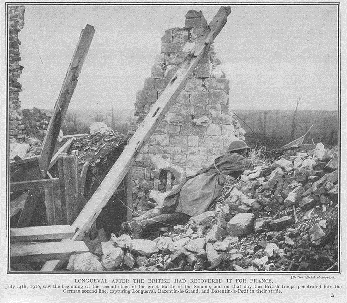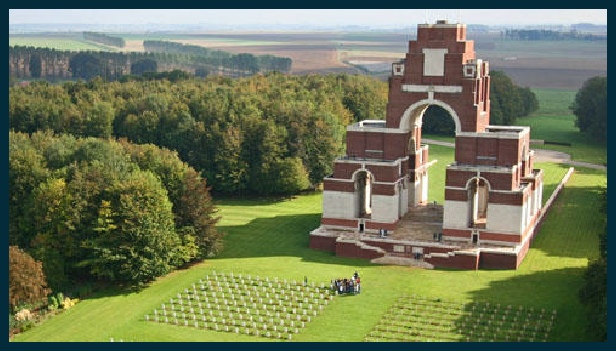Copyright © All rights reserved.



John Arthurs
John Alfred Arthurs was born in the third quarter of 1895, and his birth registered in Malton. He appears as a boarder with the Carter family at 35 Town Street, Old Malton aged 5 in the 1901 census:
1901 Census -
CARTER, John, Head, Married, M, 49, Railway Labourer, Norton, Yorkshire
CARTER, Sarah, Wife, Married, F, 54, , Malton, Yorkshire
CARTER, Eva, Daughter, Single, F, 20, Dressmaker, Malton, Yorkshire
ARTHUR, John A, Boarder, , M, 5, , Malton, Yorkshire
The only other person with the same surname in the area is Jane Arthur, a 26 year old maidservant employed by the Metcalfe family living on The Mount in New Malton. It is tempting to suspect that John was her illegitimate son boarded out while she worked to support him.
By 1911 John had gone to work as a footman in York, at the Yorkshire Club on Lendal Bridge:
1911 Census -
ARTHURS, John Alfred, Footman, Single, M, 15, Domestic Servant, Yorks Bradford
The Census states that he was born in Bradford – but it would appear that whoever filled it in was confused. Percy Harrison, whose name appears before John’s, is recorded as born in Malton, but was actually born in Bradford.
It was presumably from here that John enlisted in the 12th (Service) Battalion of the Prince of Wales's Own (West Yorkshire Regiment) probably when it was first raised in York on the 16th of September 1914 as part of Kitchener's Third New army and it joined 63rd Brigade, 21st Division. The Division concentrated in the Tring area, training at Halton Park before winter necessitated a move into local billets in Tring, Aylesbury, Leighton Buzzard, High Wycombe and Maidenhead.. In May 1915 the infantry moved to huts at Halton Park. On the 9th of August they moved to Witley Camp. They proceeded to France during the first week of September, landing at Le Havre and marched across France to going into the reserve for the British assault at Loos on the 26th of September suffering heavy casualties. On the 16th of November 1915 the Battalion transferred to 9th Brigade, 3rd Division. In 1916 they took part in The Actions of the Bluff and St Eloi Craters then moved to The Somme for The Battle of Albert, The Battle of Bazentin helping to capture Longueval and the Battle of Delville Wood. John Arthurs features on the Roll of Honour for the Battle of Delville Wood. His Medal Roll card lists him as “presumed dead”.

http://www.cwgc.org/dbImage.ashx?id=12687
This detailed account covers the weeks up to the Battle of Bazentin on the 13th July and gives a flavour of what John must have gone through before he was killed, aged just 21, at Longueval where the regiment sustained 54 fatal casualties.
The 12th West Yorks had been at La Pann on the coast of Flanders on the first day of the Somme offensive, where on this momentous day the Battalion had according to the Battalions Diary:
‘Received orders to be ready to march off at 6am, moved to Audrigges and then entrained for Doullins, marching thence to Bernaville’, where they had ‘rested’ on the second of July.
By the thirteenth the Battalion was in reserve on the Somme and were in a position known as ‘The Loop’. Here the commanding officer of the 12th, Major W. O. Oswald, had been summoned by Divisional Headquarters to receive his orders for the forthcoming operation which were:
‘Undercover of darkness an approach from the Montauban Ridge was to be made to a line roughly 250 yards from the enemy’s front line of wire, where the troops would be deployed for the attack. The 8th Infantry Brigade on the right and the 9th on the left were to attack, each Brigade having two assault Battalions with a Battalion in support and another in reserve. The assaulting Battalions were to attack in four lines, the supporting Battalions being in similar formations in rear…
The objective of 3rd Division was to be the enemy’s second line running from just east of the communication trench between [Map References] S.16.b.6.5., and S.16.b.5.2. to s.15.a.2.1., and the village of Bazentin Le Grand. The task of 12th West Yorkshires had been by no means easy. The Battalion had first to capture and ‘consolidate’ the enemy’s support line, then establish a defensive line from a road junction at the north east corner of Bazentin Le Grand Wood, there they were to construct strongpoints and in addition keep in touch with, and assist the attack of the 20th Infantry Brigade [of 7th Division] on their left. Zero Hour was set for 3-
A few hours after nightfall on the thirteenth men had been sent out into No Mans Land armed with reels of white tape to mark out a track for the assaulting troops along their 1,000-
Meanwhile the assault troops would have been making their final preparations, the customary pre attack issue of Rum had been ‘dished out’ to calm the nerves of the men apprehensively adjusting their equipment, and perhaps wondering what the next few hours had in store for them.
At 9-
‘It is now 5-
Following the ‘lifting’ of the bombardment the attacking troops rose to their feet and advanced on their allotted targets, some units came up against strong belts of barbed wire which had not been cut by the artillery, and despite their best efforts made little headway.
The ‘Old and Bold’ [the nickname of the West Yorkshire Regiment] however, had no such trouble and made good progress. The Battalions War Diary records;
-
By 4-
‘By this time the enemy had somewhat reorganised and were very active with machine guns and artillery and we were losing officers and men, so much so that at 5-
Three companies [about a 160 men] of the Northumberland Fusiliers were rushed forward to support the struggling troops and with their assistance the men of the King’s and West Yorkshire Regiments had forced their way into the devastated Bazentin Le Grand and began the hazardous task of clearing the Germans out of the ruined buildings and labyrinth of cellars, each a potential haven for snipers. By 6-
In the attack on Bazentin Le Grand the 12th West Yorkshires had suffered thirteen officers killed and wounded, including their commanding officer, Major Oswald, who was to die of wounds received ironically after the attack, from a British shell fragment. In ‘Other Ranks’ the Battalion had lost forty-
Like many others , John’s body was not identifiably recovered after the battle and he is commemorated on the Thiepval Memorial.
